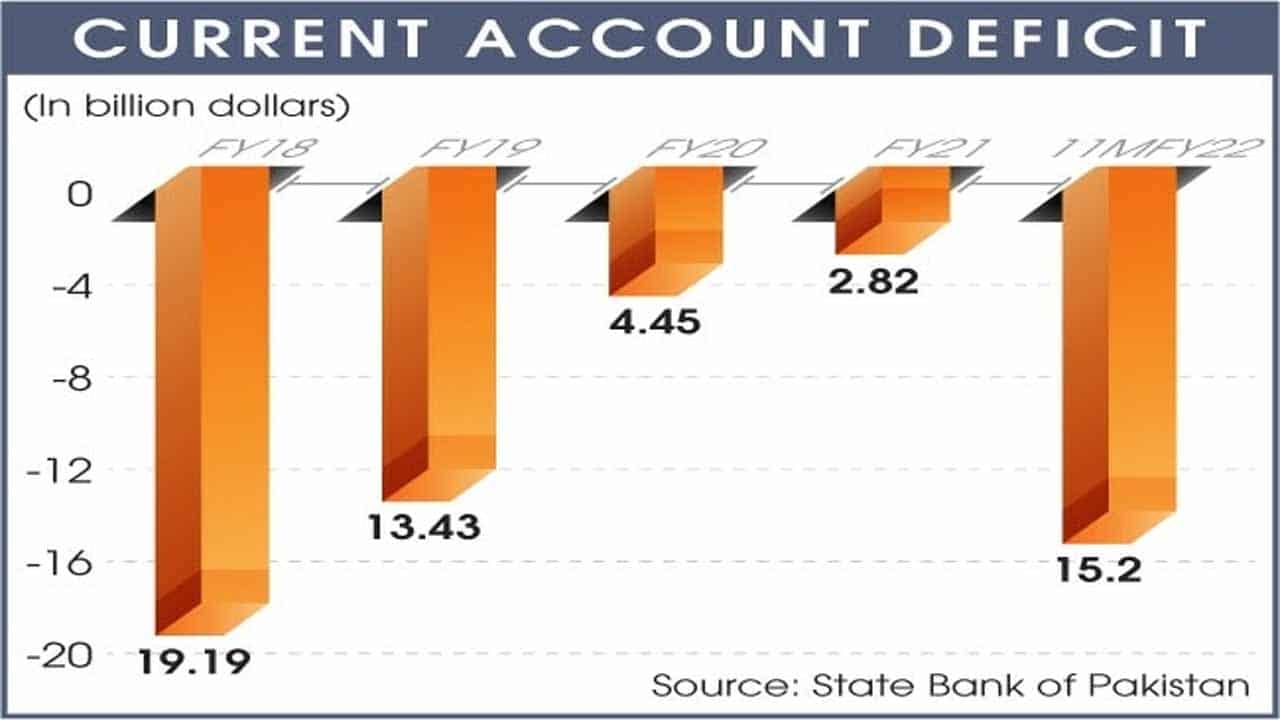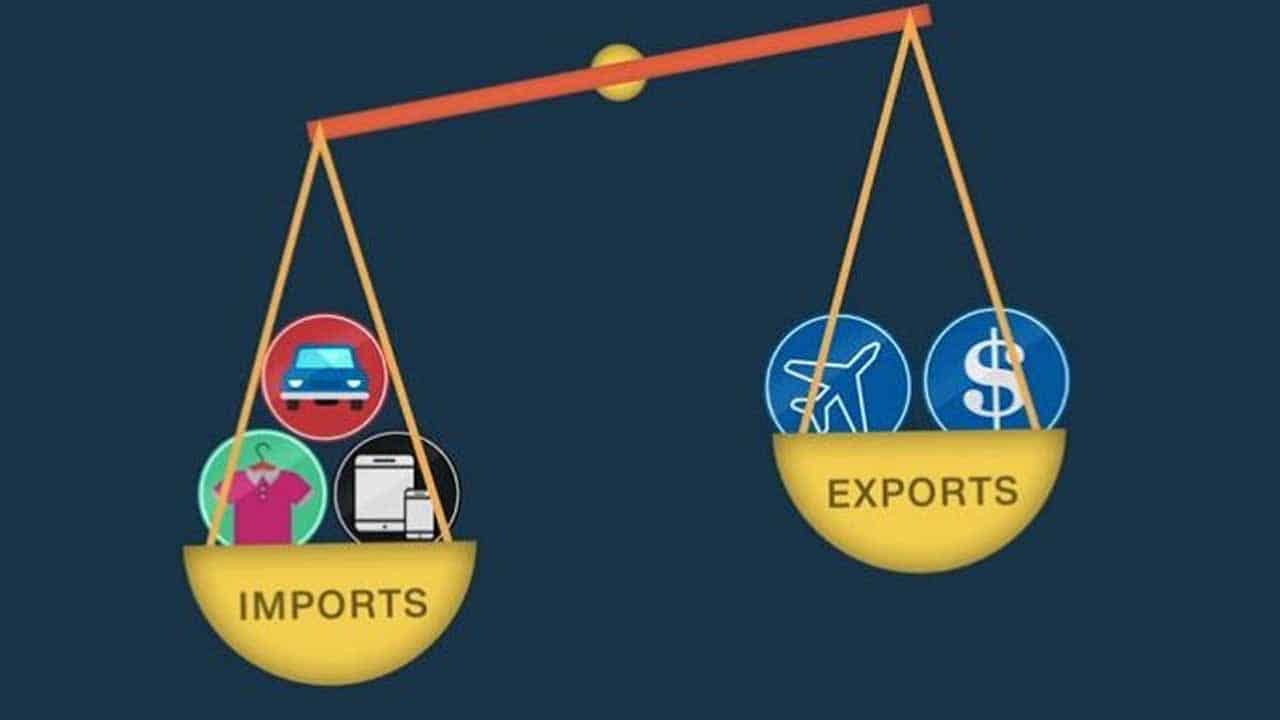The State Bank of Pakistan’s (SBP) latest data shows that the current account deficit (CAD) sharply widened to $15.2 billion in the first 11 months of the outgoing fiscal year compared to just $1.183 billion in the corresponding period last year.

The CAD was more than doubled when compared with $618 million in April. The May deficit was even higher than March’s $1.015 billion.
The economy is currently experiencing CAD and falling foreign exchange reserves, which have devalued the rupee. This has left the current government with little chance of raising much-needed dollars from the international market.
The data revealed that the primary cause for the widening current account deficit was the mounting import bill.
The import bill reached $75.746bn during the first 11 months of the current fiscal year, compared to $55.561bn in the same period last year.
The government was unable to control world oil prices, which were ascending due to sustained demand from all countries to meet their expanding energy needs as economic activities picked up following the pandemic.
The increasing trade gap is due in part to higher oil prices, as the import bill for the first 11 months of the current fiscal year was $75.74bn, compared to $17.923bn for petroleum products and $9.818bn last year.
The PML-N-led coalition government has attempted to reduce the import bill by banning imports of luxury and non-essential goods on 32 items, but so far this decision has not had the desired effect.
According to the State Bank of Pakistan (SBP), the trade deficit stood at $40.095 billion during the July-May period of FY22. Imports of goods and services totalled $75.7 billion, while exports of goods and services were worth $35.651 billion.
This huge deficit led to a steep decline in foreign exchange reserves, which caused the local currency to depreciate by 24 per cent against the US dollar during the outgoing fiscal year.
The government succeeded to avail $2.3bn from China to support its falling foreign exchange reserves but the reports in the media suggested that the Chinese inflow was costlier than earlier since the interest rate has been increased.






